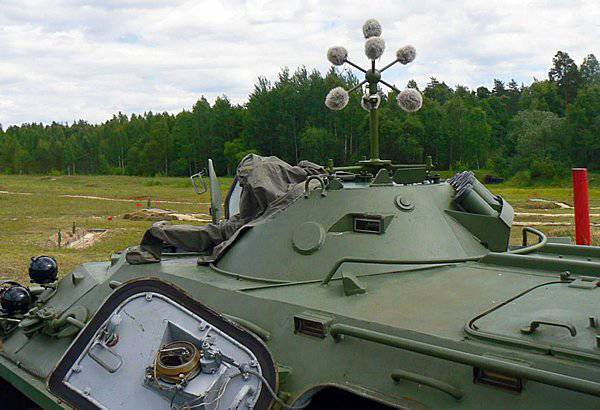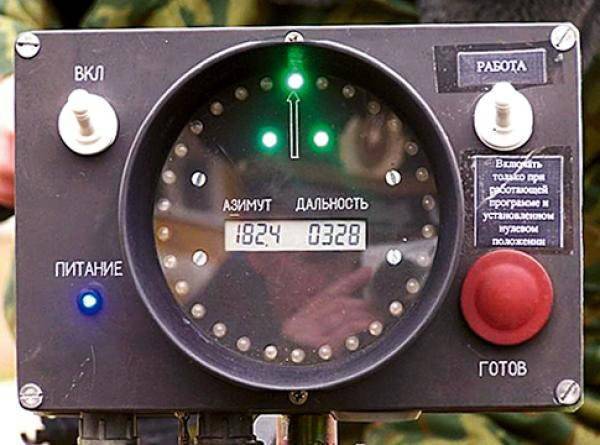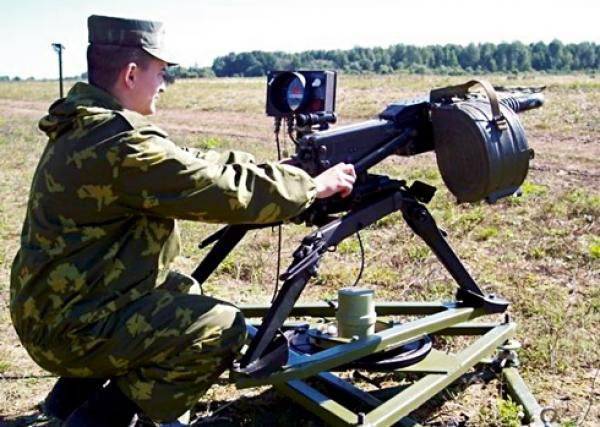Fire Detection System "SOVA"

Today, the prospects for the development of acoustic systems for detecting firearms are the most modern. Weapon constantly improving, but one thing remains unchanged - the shock wave from the production of a shot and the flight of a bullet.
So by calculating the known parameters, the shock wave can accurately determine the place of the shot. Since the shock wave of the bullet flight has a cone-shaped propagation, the top of which will be a flying bullet, the axis of the cone will be the trajectory of this munition.
Other characteristics are known:
- the angle of the cone depends on the speed of the bullet, which loses energy on the 1 XnUMX joule;
- the acoustic munitions flight level is approximately equal to 100dB
- sound wavelength 0.16-0.6 meter;
- approximate frequency range from 0.6 to 2 kHz.
As a result, if the system will use these mathematical parameters for counting and calculate them automatically, it will quickly determine the location of the shot.
When conducting reconciliation and peace enforcement operations, Western countries increasingly value the acoustic fire detection systems.
The United States has already successfully used such systems as PDC, Boomerang, Lifequard. England uses the BDI system.
The well-known French company offers a system for defining snipers "METRAVIB". Russian designers do not lag behind the French either. FSUE RFNC-VNIIEF offered the Russian military a system for identifying SOVA snipers, which stands for an acoustic shot detection system. This complex has the ability to determine the location of sniper shooters in real time. "SOVA" is made on 100 percent of the parts of domestic production and has passed all sorts of tests in all weather and time conditions. “SOVA” even managed to take part in military operations in the North Caucasus.
There, the system was used to guard the roadblocks, some points of deployment of various units and provide security guard groups.
It was the combat use that fully confirmed the highest indicators of the SOVA system. The system easily mates with automatic combat means of neutralizing firing positions, for example, the interface with the AGS-17 grenade launcher was successfully tested. Such a comprehensive solution ensures maximum minimization of the maintenance of the systems for determining and suppressing enemy firing positions.
Information arrives to the operator instantly, so coordinating the system is reduced to choosing priorities for the target. “SOVA” can facilitate the tasks of the scouts, as it easily defines targets with intensive firing to the 1 kilometer. It is possible to use the system to coordinate the fire of a separate unit using data obtained from various sources on the system. The system quickly makes calculations and provides real-time adjustment to the unit. Today, this system is supplied to the special troops of the anti-terror of the Russian Federation.

The composition of the system.
“SOVA” consists of special sensors for acoustic reception and a powerful computer. The main node of the system can be called a specialized software solution, which performs all calculations based on information from acoustic sensors. The task of the sensors is to constantly transmit information to the computer from all sides. The software cuts off any sound interference and processes only information relating to the production of a shot and the flight of an ammunition. All information processing comes down to the following: first, the sensors transmit all the information collected from the surrounding space to the computer. Then, on a computer, the software solution calculates the parameters of the acoustic wave, on its basis, calculates the trajectory of the passage of the munition and, using this data, gives as a result the clear coordinates of the place from which the shot was fired.

The main characteristics of the SOVA system:
- the number of driven targets is not more than ten units;
- sector detection target 360 degrees;
- the maximum caliber of driven targets to 14.5 mm;
- the determination error to 500 meters is equal to 5 percent;
- the determination error over 500 meters is equal to 10 percent;
- spacing in azimuth does not exceed one percent;
- identification of small-caliber targets up to 0.6 kilometers;
- definition of large-caliber targets to 1.5 kilometers.
Information